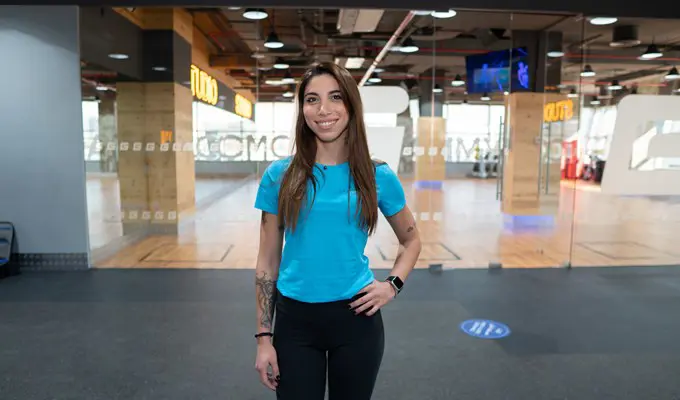WHY SHOULD YOU TRAIN YOUR BACK?
A wide, strong back, though often overlooked, is fundamental in achieving a v taper. Though shoulders can and should be built up, it’s actually the latissimus dorsi muscles of the back that give width to the upper portion of the torso. Therefore, adding mass to the back will give the torso the feeling of fullness for which many people train. Read on to find GymNation's best back workouts!
A strong back is also vital from a functional point of view. It will enable good posture, will keep the body safe under load, and will form a key component in many every day and gym-based movements. Pretty much every motion the human body can perform will rely in some way on the muscles of the back, and these muscles are critical for good posture.
SIGN UP FOR YOUR FREE DAY PASS TODAY!
The back is made up of three main muscle groups. The latissimus dorsi already mentioned runs up each side of your back. This aids in extension and rotation and allows you to pull your arms towards your body. The erector spinae are three muscles that run the length of your spine. They are involved as stabilisers, as well as playing roles in rotation, flexion and extension. Finally, there are the rhomboids, with are two sets of muscles (major and minor) that sit between the shoulder blades. They aid in rotation, elevation and retraction, as well as in maintaining good posture.
Every time you stand up, pull anything towards you, turn, bend, or brace your torso under load, the muscles of your back will be at play.
Back muscles need to be worked under quite heavy loads, as they are large, load bearing groups. A good, well-rounded back programme will involve rows like dumbbell, barbell or cable rows, carries, like the farmers walk, and some form of posterior chain work, like deadlifts. They will take a while to recover from heavy loading, however, so it’s best to train them less often than smaller muscle groups like the biceps and triceps. Get yourself a personal trainer to help you maintain your fitness levels!
BACK EXERCISES
DEADLIFTS
Deadlifts are amongst the biggest hitting exercises going. They are fantastic for building full body strength, for eliciting hypertrophy throughout the body, for developing power and stability through the posterior chain, and for developing a large, stable back. You need to include them in your regular routines if you want to get big and strong.
Main muscles worked:
- Back, lower and upper
- Traps and shoulders Hamstrings
- Glutes
- Forearms
- Core
PULL UPS
Any rowing movement will engage the muscles of the back, relying on it as a prime mover. Pulling objects towards the body, or the body towards an object, is one of their main tasks.
Pull ups achieve this more than most. They work the latissimus dorsi as biceps as a prime mover, whilst relying on every single other muscle in the back and core for stability. The strength required to perform them is profound – the strength and size they can build is equally so. Pull ups are amongst the most intense back exercises going.
Main muscles used:
- Upper back (primarily)
- Lower back
- Forearms
- Biceps
- Core
BARBELL ROWS
Barbell rows are a great alternative to pull ups and can emphasise the upper back more than the mid-point usually focussed on by pull ups. As with pull ups, they use the full back, including the erector spinae and core for stability, and they bring the smaller muscles of the rhomboids into play a considerable amount more.
Main muscles used:
- Upper back
- Lower back
- Forearms
- Biceps
- Core
Without a solid, strong back, you won’t be able to progress too far in any kind of athletic discipline, and you will be opening yourself up to a much increased risk of injury in the long run. The back muscles are active in pulling your arms in and down from above your head, making them crucial for any kind of rowing action. They help you to twist your torso, aiding manoeuvrability, and resists twisting motions, aiding stability. Crucially, they help to stabilise your spine, keeping you safe.
Having strong back muscles will give you a solid foundation from which to lift and move and will keep you safe from injury and longer term back problems. It is vital to work them often, hard and safely in order to prevent injury. It is important to work them often so that your entire body can operate smoothly as a single, powerful unit.
Angela Pataputian
Personal Trainer, GymNation Al Quoz















































































